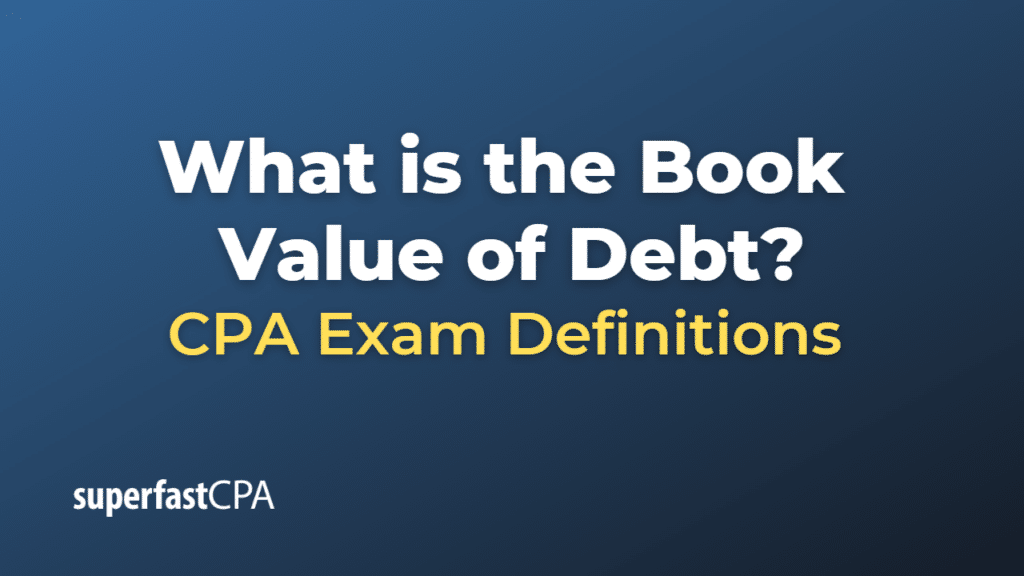Book Value of Debt
The book value of debt is the total amount of outstanding debt recorded on a company’s balance sheet, representing the carrying value or historical cost of the debt rather than its current market value. It is the sum of all short-term and long-term liabilities that a company owes to its creditors, such as bank loans, bonds payable, and notes payable.
The book value of debt is an important financial metric that investors and analysts use to assess a company’s debt position, creditworthiness, and overall financial health. A lower book value of debt compared to a company’s assets indicates a lower financial risk, while a higher book value of debt may signal a higher financial risk, as the company has a larger proportion of its resources tied up in debt obligations.
To calculate the book value of debt, you need to add up all the short-term and long-term liabilities listed on a company’s balance sheet:
Book Value of Debt = Short-term Debt + Long-term Debt
Keep in mind that the book value of debt does not necessarily represent the market value of the debt, which could be higher or lower based on prevailing interest rates, credit ratings, and other factors. While the book value of debt provides a useful snapshot of a company’s debt position, it is essential to consider additional financial metrics and market factors when evaluating a company’s overall financial health and creditworthiness.
Example of the Book Value of Debt
Let’s consider a hypothetical example to illustrate the concept of book value of debt for a company.
Imagine that Company XYZ has the following liabilities on its balance sheet:
- Accounts Payable: $300,000
- Short-term Debt: $200,000
Long-term Liabilities:
- Long-term Debt: $800,000
- Deferred Tax Liabilities: $100,000
To calculate the book value of debt, you would add up the short-term and long-term debt listed on the company’s balance sheet:
Book Value of Debt = Short-term Debt + Long-term Debt
Book Value of Debt = $200,000 (Short-term Debt) + $800,000 (Long-term Debt) = $1,000,000
In this example, the book value of debt for Company XYZ is $1,000,000.
Keep in mind that the book value of debt does not necessarily represent the market value of the debt, which could be higher or lower based on prevailing interest rates, credit ratings, and other factors. The book value of debt provides a useful snapshot of a company’s debt position, but it is essential to consider additional financial metrics and market factors when evaluating a company’s overall financial health and creditworthiness.
For instance, you might compare the book value of debt to the company’s total assets, equity, or operating cash flow to gauge its financial risk, leverage, and ability to service its debt obligations. Additionally, you could examine the company’s interest coverage ratio or debt-to-equity ratio to assess its creditworthiness and financial stability.













